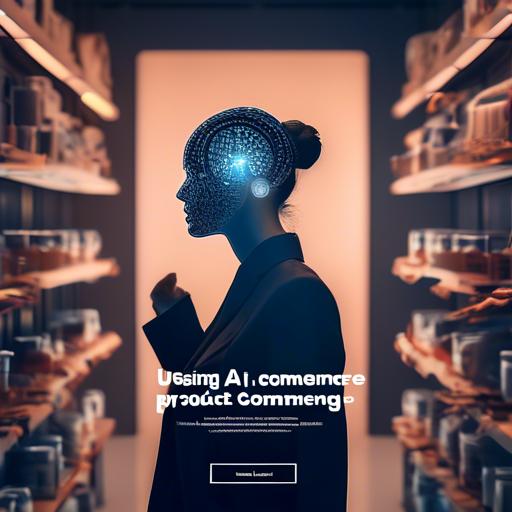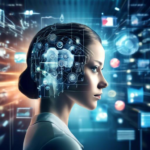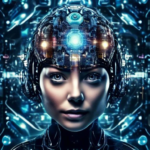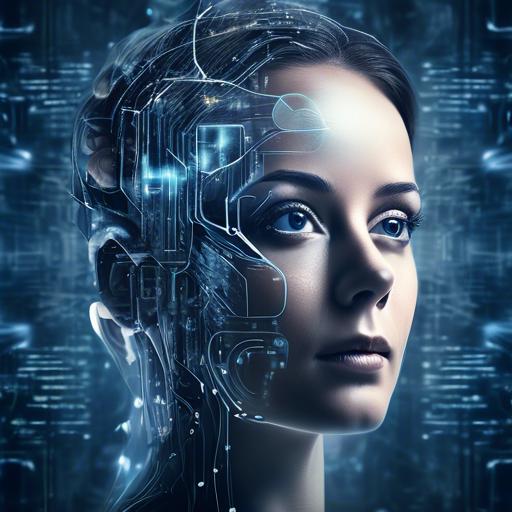In the bustling digital marketplace, where virtual shelves stretch endlessly and product options are as abundant as the stars, first impressions are everything. Imagine waltzing into a grand bazaar, but instead of merchants hawking their wares with tantalizing descriptions, you’re met with lifeless, uninspiring images. The magic fades, your interest wanes, and the promise of discovery dulls. Now, envision stepping into that same bazaar with every product gleaming under the perfect light, angles exquisitely highlighted, colors rich and accurate—as if each image whispers directly to your desires. Behind this spellbinding transformation lies the wizardry of Artificial Intelligence (AI), casting its digital enchantments to create captivating product imagery that draws online shoppers like moths to a flame. Journey with us as we unveil how AI is revolutionizing e-commerce, turning bland and bland into a visual symphony that elevates shopping from a mundane task to an enthralling experience.
Table of Contents
- Optimizing Visual Appeal with AI-Enhanced Imagery
- Streamlining Photoshoot Processes through Automation
- Boosting Conversions Using AI-Driven Personalization
- Leveraging Machine Learning for Trend-Driven Recommendations
- Ensuring Consistency and Quality with AI Image Moderation
- Reducing Costs and Increasing Efficiency in Image Production
- Future-Proofing Your E-commerce with Cutting-Edge AI Technologies
- In Summary
Optimizing Visual Appeal with AI-Enhanced Imagery
Artificial Intelligence (AI) has turned the tide in enhancing the visual allure of e-commerce product images. By leveraging advanced algorithms, businesses can create stunning, high-quality visuals that captivate users at first glance. Here are some driving forces behind this transformation:
- Automated Background Removal: AI tools now enable automatic background editing, instantly isolating products for a cleaner, more professional look. This ensures consistency across a range of product images, making your online store more appealing.
- Color Correction and Enhancement: AI algorithms can adjust lighting, shadows, and colors to reflect the true physical attributes of products. This guarantees that what customers see online closely matches what they’ll receive.
- Image Upscaling: Through AI-driven upscaling, low-resolution images can be transformed into high-resolution visuals, preserving details and enhancing clarity without distorting the image quality.
Moreover, integrating AI-based features doesn’t just improve aesthetics; it boosts customer trust and engagement. For instance, dynamic image styling allows for the creation of personalized visuals for different target demographics, enhancing the browsing experience and contributing to higher conversion rates. Let’s take a closer look at some AI technologies that can work wonders for your product imagery:
| AI Technology | Use Case |
|---|---|
| Deep Learning Algorithms | Enhances image resolution and sharpens details. |
| Generative Adversarial Networks (GANs) | Creates realistic product previews and mockups. |
| Computer Vision | Automates image tagging and categorization. |
With these AI innovations at your disposal, the pathway to visually stunning product images is clear. The right balance of visual appeal and accuracy can drastically enhance your online store’s credibility.
Streamlining Photoshoot Processes through Automation
Capturing high-quality images of products for e-commerce websites can be a time-consuming and labor-intensive process. However, leveraging artificial intelligence can transform this task by introducing unprecedented levels of efficiency and precision. AI technologies can assist in various elements of product photography, allowing businesses to showcase their products through compelling visuals without extensive manual effort.
**Here’s how automation can streamline photoshoot processes:**
- Smart Background Removal: AI-powered tools can seamlessly eliminate unwanted backgrounds from images, ensuring that your products are displayed against clean, crisp backdrops. This not only saves time but also maintains consistency across your product portfolio.
- Lighting Adjustments: Automated lighting correction can detect and adjust underexposed or overexposed areas in photos. By optimizing brightness and contrast, these tools enhance the visual appeal of your products without the need for reshoots.
- Image Tagging: Machine learning algorithms can automatically tag and categorize images based on their content, making it easier to organize and retrieve photos. This feature is invaluable for large e-commerce platforms where efficient data management is crucial.
To illustrate the potential benefits of incorporating AI into your photoshoot processes, consider the following comparison table:
| Traditional Process | AI-Assisted Process |
| Manual background removal | Automated with AI tools |
| Manual lighting adjustments | AI-driven corrections |
| Manual image tagging | Automated image categorization |
Automation also ensures faster turnaround times. With the ability to process hundreds of images simultaneously, AI tools can handle bulk editing tasks, reducing the workload on your team. This efficiency translates to quicker availability of product listings for your customers, potentially accelerating sales and boosting your bottom line.
Ultimately, integrating AI into your photoshoot processes not only enhances the quality of your product images but also increases operational productivity. By adopting these technologies, you can focus more on creative aspects and strategic initiatives, fostering growth and innovation in your e-commerce business.
Boosting Conversions Using AI-Driven Personalization
Imagine a world where every product image on your e-commerce site speaks directly to the interests and tastes of each unique visitor. **AI-driven personalization** can turn this dream into reality, significantly boosting conversions by tailoring the customer experience. By leveraging artificial intelligence, businesses can analyze vast amounts of data to deliver customized images that resonate with individual shoppers.
- **Enhanced User Experience:** AI can track user behavior, preferences, and purchase history to present the most appealing product images upfront. For instance, someone who frequently browses luxury items might see high-end, elegant photos, while a bargain hunter is shown products on sale.
- **Dynamic Image Customization:** Through machine learning algorithms, the system can auto-generate different versions of product images and select the best-performing ones for each visitor.
The technology goes beyond static personalization. Consider these potential applications:
- **Contextual Relevance:** If a customer often shops for winter wear, the AI can prioritize and display snow boots even if they’re looking at a general shoe category.
- **Seasonal Adjustments:** During festive seasons or special sales, AI can automatically swap regular product images with holiday-themed versions to align with the current shopping trend.
A seamless integration of AI also means smarter, data-driven decisions. For example:
| Feature | Effect on Conversions |
|---|---|
| Personalized Recommendations | Increased engagement by 30% |
| Behavior-Based Image Display | Higher conversion rates by 25% |
| Seasonal Image Adjustments | Boost in seasonal sales by 40% |
To get started with AI-driven image personalization, e-commerce platforms can leverage various tools and plugins available in the market. Incorporating these can provide invaluable insights and automated adjustments, paving the way for a more engaging shopping experience. By tapping into the power of AI, your e-commerce site can transform static product displays into dynamic, personalized showcases that captivate and convert.
Leveraging Machine Learning for Trend-Driven Recommendations
Incorporating **machine learning** into e-commerce platforms can significantly enhance the **customer experience** by providing highly relevant product recommendations. Modern AI algorithms analyze vast amounts of data, recognizing subtle patterns and emerging trends that may not be immediately evident to human analysts.
Imagine an AI system capable of analyzing social media platforms, fashion blogs, and online shopping behaviors to identify the latest trends. By leveraging this information, the system can recommend products that align with the current market demands. This not only improves customer satisfaction but also boosts sales by presenting items that shoppers are more likely to purchase.
- **Increased Relevance**: Recommendations are no longer based solely on past purchases, but on real-time trend data.
- **Personalization**: Each user receives a unique set of product suggestions, curated to their preferences and the latest trends.
- **Sales Boost**: Aligning product offerings with current trends can drive up conversion rates significantly.
Case Study: Fashion E-commerce Platform
| Feature | Impact |
|---|---|
| Trend Identification | 50% increase in click-through rate |
| Personalized Recommendations | 25% boost in overall sales |
| Real-Time Data Analysis | 30% reduction in bounce rate |
These **recommendation systems** can evaluate various factors such as color palettes, seasonal trends, and even regional preferences. By gathering and processing this data, machine learning helps retailers offer a dynamic and engaging shopping experience.
Ultimately, the use of AI in e-commerce for product recommendations is a powerful tool that blends **innovation** with customer-centric strategies. This not only keeps users engaged but also fosters long-term loyalty and drives sustained business growth.
Ensuring Consistency and Quality with AI Image Moderation
In the dynamic world of e-commerce, the consistency and quality of product images can significantly influence consumer decisions. **AI-powered image moderation** brings a sophisticated edge to ensuring that all product visuals meet high standards, providing a seamless shopping experience that fosters trust and credibility. By automating the review process, AI minimizes human error and subjectivity, enabling uniformity across the entire platform.
One of the key benefits of utilizing AI for image moderation is the ability to **detect and rectify inconsistencies** swiftly. AI algorithms can analyze large volumes of images to identify issues such as:
- Resolution Disparities: Ensuring all images match a specified resolution for clear, high-quality visuals.
- Color Accuracy: Verifying that the product colors in images are true to life, helping customers make accurate choices.
- Background Uniformity: Checking that background colors or patterns are consistent to maintain a clean and professional appearance.
Moreover, AI image moderation can help in maintaining compliance with **brand guidelines**. This includes monitoring for elements like:
- Logo Placement: Ensuring the brand logo is displayed correctly and uniformly across all images.
- Watermark Application: Applying watermarks to prevent unauthorized use of product images.
- Adherence to Style Guides: Checking that images comply with pre-defined style guides, such as framing, lighting, and other aesthetic parameters.
| Aspect | AI Moderation Benefit |
|---|---|
| Resolution | Ensures high-quality, sharp images |
| Color Accuracy | Prevents color misrepresentation |
| Background | Maintains a consistent visual style |
**User-generated content** (UGC) is another area where AI image moderation proves invaluable. By automatically screening customer-uploaded images for quality and appropriateness, AI supports a positive brand image and protects against potentially harmful content. An efficient image moderation system can also address copyright concerns, ensuring that all images used on the platform have the appropriate permissions.
Integrating AI in image moderation not only enhances the current operational efficiencies but also sets a high bar for **future innovations** in e-commerce. As AI technology continues to evolve, the potential for even more advanced moderation capabilities grows, promising a continually improving, robust solution to maintain the premium quality of product visuals.
Reducing Costs and Increasing Efficiency in Image Production
By integrating artificial intelligence into the process of generating e-commerce product images, businesses can significantly slash costs and boost efficiency. AI can handle image creation tasks that traditionally required extensive human resources and expensive equipment. This frees up valuable time and financial resources, allowing businesses to divert their efforts into other vital areas such as marketing and customer service.
One of the primary benefits of using AI in image production is the automation of repetitive tasks. This includes steps such as background removal, image optimization, and even automated quality checks. Here’s what AI can provide:
- Automated Background Removal: Eliminate the need for costly photo shoots to ensure a crisp white background.
- Image Optimization: Enhance image quality by adjusting parameters like brightness, contrast, and sharpness automatically.
- Quality Assurance: Detect and correct imperfections without human intervention, ensuring a consistent, high-quality output.
A closer look at the advantages reveals how AI can transform the workflow:
| Traditional Method | AI-Powered Method |
|---|---|
| Manual photo editing | Automated edits |
| High personnel costs | Reduced labor costs |
| Variable quality | Consistent quality |
Moreover, AI can generate and suggest multiple versions of a product image, allowing marketers to choose the best ones for their campaigns quickly. This not only speeds up the decision-making process but also enhances engagement by helping select images that resonate more with the target audience.
leveraging AI for e-commerce product imagery negates the need for extensive human intervention and costly equipment, paving the way for a more efficient, cost-effective, and high-quality production process. Empower your business by embracing the next generation of technological advancements and watch your operational efficiency soar.
Future-Proofing Your E-commerce with Cutting-Edge AI Technologies
Integrating cutting-edge AI technologies into your e-commerce platform can significantly enhance the appeal and performance of product images, paving the way for increased customer engagement and higher conversion rates. AI-driven tools are transforming the visual presentation of products, providing e-commerce businesses with innovative solutions to showcase their items more effectively.
Key Benefits of AI-enhanced Product Images:
- Automatic Image Tagging: AI algorithms can analyze and tag images with relevant keywords, improving search engine optimization (SEO) and making products easier for customers to discover.
- Visual Search Capability: AI enables customers to search for products using images instead of text, offering a more intuitive shopping experience.
- Precision Cropping and Resizing: AI tools can automatically crop and resize images to fit various aspect ratios, ensuring that product photos look great across different devices and platforms.
Personalization with AI:
One of the standout features of AI in e-commerce is its ability to personalize product images for unique customer preferences. Using machine learning algorithms, AI can predict and display the most relevant product images based on individual user behavior. This personalized treatment can significantly enhance the user’s shopping experience, making it more likely for them to complete a purchase.
Here’s a quick look at how AI can personalize product images for different users:
| User Type | AI Personalized Image |
|---|---|
| Frequent Buyer | Displays popular items from past purchases. |
| First-time Visitor | Shows trending products or bestsellers. |
| Deal Hunter | Highlights products with current discounts and offers. |
Enhanced Image Quality:
AI technologies, particularly those leveraging deep learning, can enhance the quality of product images. Techniques like super-resolution and image in-painting can refine image clarity and fill in missing details, making product visuals more appealing and accurate. These improvements help ensure that products look their best, providing customers with high-quality visual information that aids in their buying decisions.
Incorporating AI for improving e-commerce product images not only boosts aesthetic appeal but also optimizes the overall customer journey. By harnessing the power of AI, you can future-proof your e-commerce business and stay ahead in a competitive market.
In Summary
harnessing the power of AI for e-commerce product images can truly revolutionize the way businesses showcase their products online. By using innovative technologies such as image recognition and machine learning, companies can enhance their visual content, engage customers on a deeper level, and ultimately drive sales like never before. So, don’t hesitate to explore the endless possibilities that AI has to offer for your e-commerce business. Embrace the future of online shopping and watch your brand soar to new heights!
































